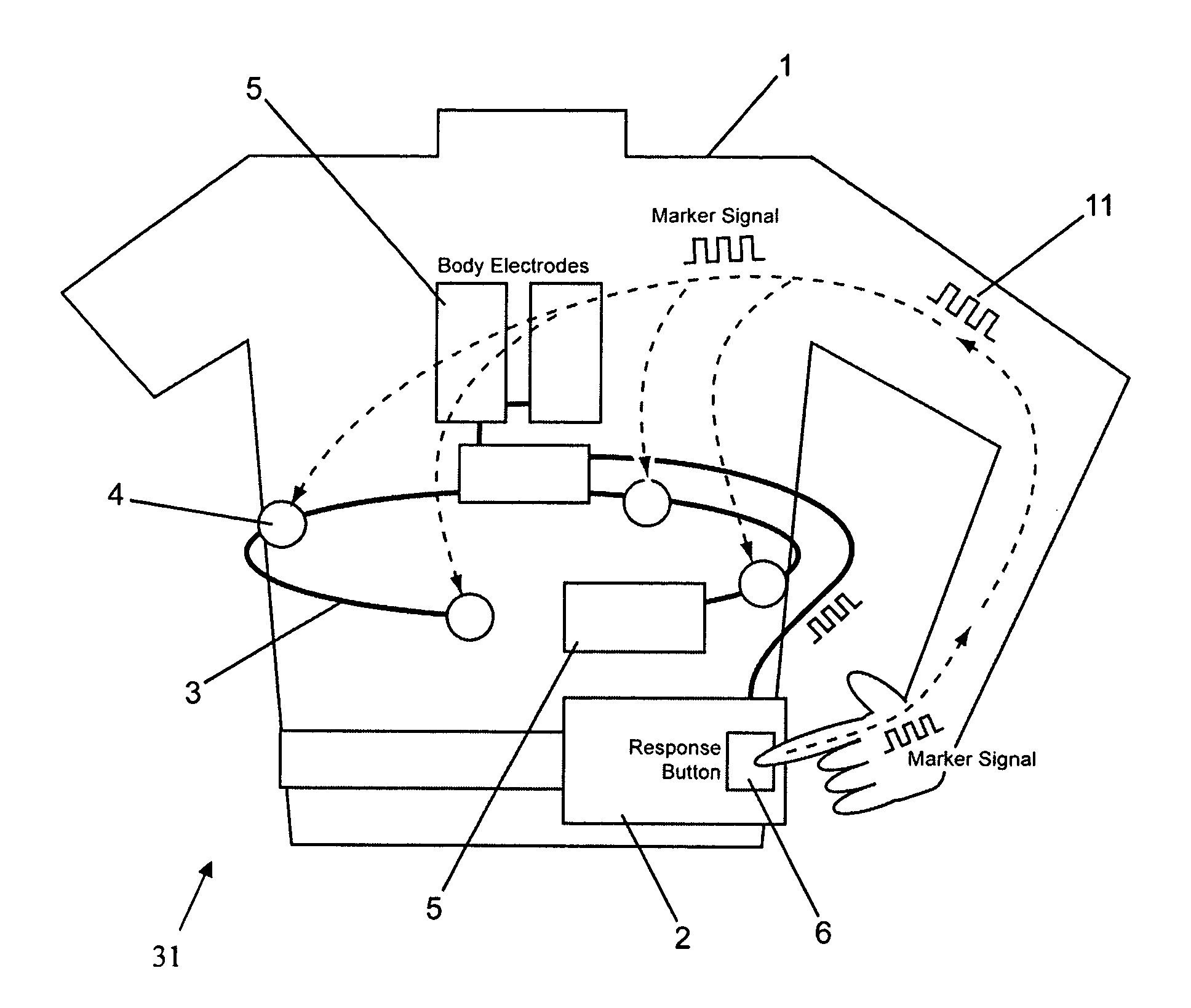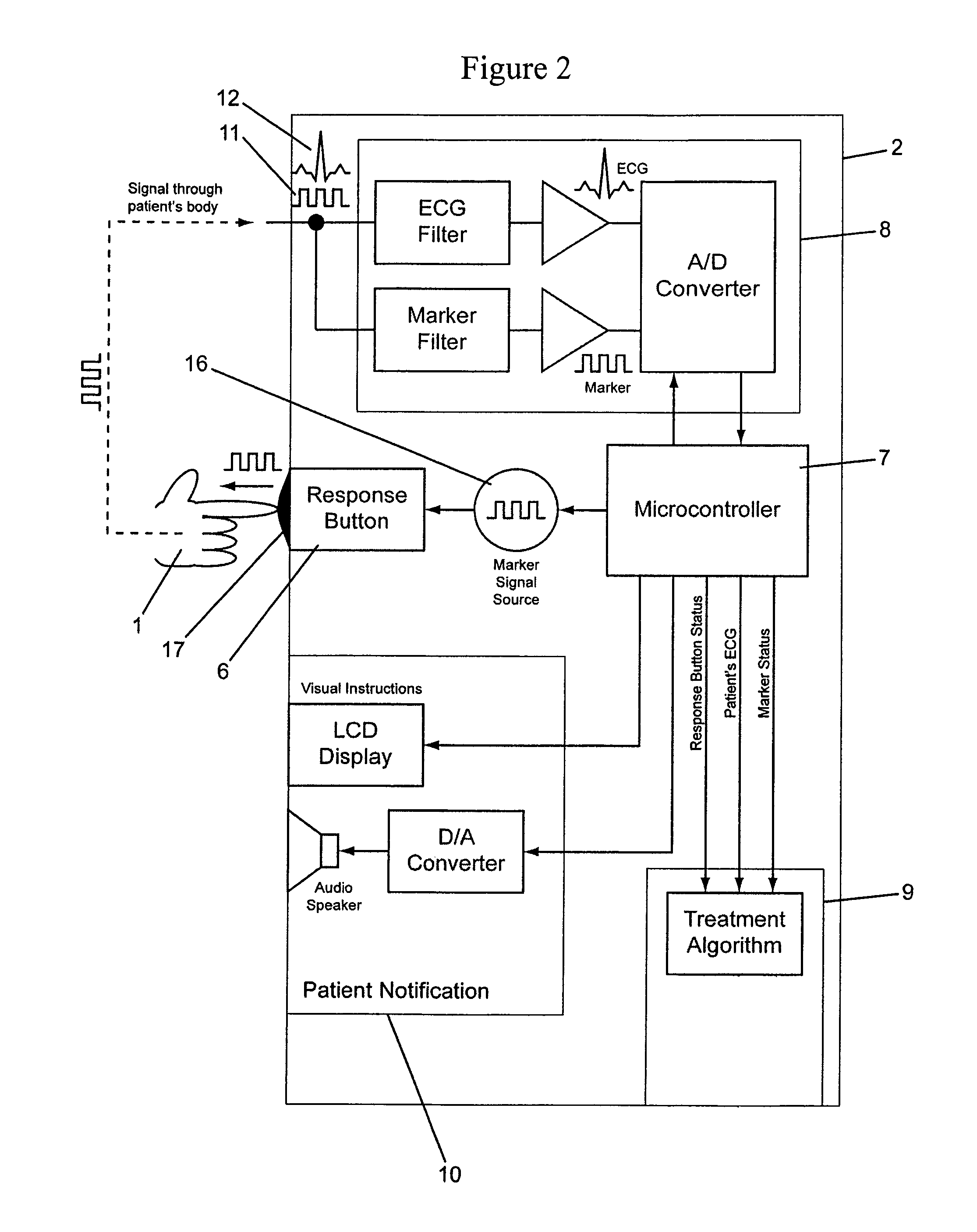Medical device configured to test for user responsiveness
a medical device and responsiveness technology, applied in the field of responsiveness testing, can solve the problems of patients at risk of sudden death, patients with coronary artery occlusion and myocardial infarction, and patients at an inordinate risk of tachyarrhythmia,
- Summary
- Abstract
- Description
- Claims
- Application Information
AI Technical Summary
Benefits of technology
Problems solved by technology
Method used
Image
Examples
Embodiment Construction
[0033]A patient 1 wearing a wearable defibrillator 31 that is configured to be worn as a vest is illustrated in FIG. 1. The wearable defibrillator 31 includes sensing electrodes 4 connected to a controller 2 by wiring 3. Treatment electrodes 5 are also connected to the controller 2. The controller 2 includes at least one response button 6. The response button 6 is configured to transmit a unique marker signal 11 into the body of a person touching the button 6. Preferably, the marker signal 11 is transmitted throughout the entire body of the person touching the button 6.
[0034]The marker signal 11 may be analog or digital and should have electrical characteristics that are safe for the person touching the response button 6, which preferably will be the patient 1. Preferably, the marker signal 11 is of an electronically generated low amplitude signal that will not harm the patient 1. The marker signal 11 may include encoded information unique to either the patient 1 or the wearable def...
PUM
 Login to View More
Login to View More Abstract
Description
Claims
Application Information
 Login to View More
Login to View More - R&D
- Intellectual Property
- Life Sciences
- Materials
- Tech Scout
- Unparalleled Data Quality
- Higher Quality Content
- 60% Fewer Hallucinations
Browse by: Latest US Patents, China's latest patents, Technical Efficacy Thesaurus, Application Domain, Technology Topic, Popular Technical Reports.
© 2025 PatSnap. All rights reserved.Legal|Privacy policy|Modern Slavery Act Transparency Statement|Sitemap|About US| Contact US: help@patsnap.com



